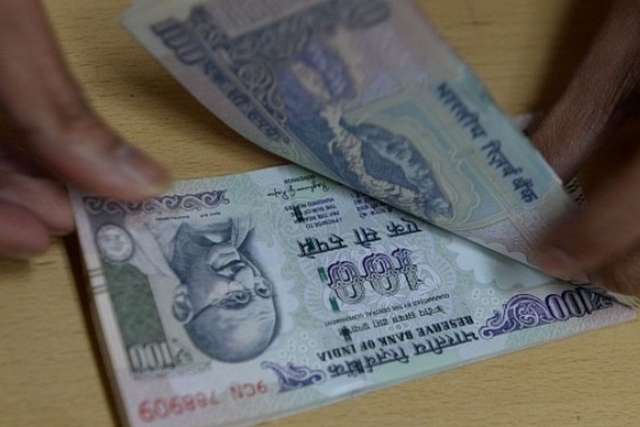
Doubling The National Minimum Wage Is Not The Idea India Needs Now
India needs to create over 70 lakh net new jobs every year in the medium-to-long term to absorb all the new entrants to the labour market.
Doubling the minimum wage is likely to jeopardise all efforts made towards this cause.
An expert committee appointed by the government recently submitted its report to the Ministry of Labour. One of its primary recommendations was to double the national minimum wage from the current Rs 4,576 a month to Rs 9,750 a month, or Rs 375 per day.
Over and above this national limit, individual state governments will be able to raise the minimum wage limit even higher in their respective states. And this will most likely to happen if we go by historical evidence.
If the proposal is accepted and the national wage floor is doubled from its current value, then it will be the third such hike by the government after it announced an increase of 16.7 per cent in July 2015 and 10 per cent in June 2017.
According to the World Bank, anyone in India earning less than $3.2 (2011 prices) or around Rs 75 per person per day (PPP basis) should be classified as poor. Thus, a worker needs only Rs 2,250 per month to make it above the poverty line. Thus, the current minimum wage of Rs 4,756 a month is already 113 per cent higher than the poverty line. The new suggested figure of Rs 9,750 a month will be a whopping 330 per cent more than India’s poverty line.
It should be noted that the World Bank’s poverty line is higher than Rangarajan Committee’s poverty line figures which are used widely in Indian policymaking. Thus, the difference between the Rangarajan line and the proposed minimum wage will be much larger than the difference between the World Bank line and the proposed minimum wage.
However, the new wage hike proposal is in line with India’s per capita income which stands at Rs 1,12,835 per year or Rs 9,402 per month. But just because they both coincide does not justify the figure. Minimum wage is always a small percentage of the per capita income, not equal to it. This has been the case for all G20 countries and most countries outside of that grouping too.
By itself, the proposal to double minimum wages, seems benign. This socialist programme intends to better the lives of those employed in not-so-remunerative jobs by promising higher wages and thereby, a better standard of living. Also, this hike is expected to increase the overall demand in the economy by putting more money into the hands of workers. A part of this higher disposable income will be spent on buying goods which were previously unaffordable. With increased demand, producers will increase the supply of goods. To do this, producers will have to build new facilities and employ more people. Thus, it is hypothesised that raising wages will lower the unemployment rate.
Sounds logical and accurate right? But that is not the case. This hypothesis is based on false assumptions and instead of creating jobs, it will do the polar opposite.
Noted economist and Nobel laureate George Stigler concluded that a minimum wage actually tends to increase unemployment and reduce family income, though there might be productivity gains in the society.
The latest example of this inverse relationship between higher minimum wages and unemployment is South Korea. Since coming to power, President Moon Jae-in has increased South Korea’s minimum wage by 16.4 per cent last year (2018) and again by 10.9 per cent this year (2019). Just as the hike came into effect, the unemployment rate in the country soared to 4.4 per cent in January – an increase of 60 basis points from the month before (3.8 per cent). This was the first time in nine years that South Korea has recorded such high levels of unemployment.
Economic theory suggests that price control leads to the expansion of the underground or black market. Higher minimum wages will force organised sector companies to outsource work to the informal sector where such wage hikes are not followed as a rule. In fact, according to a NITI Aayog report, wages in the informal sector firms can be one twentieth of those in firms producing the same goods or services but in the formal sector. Thus instead of formalising the economy, the government will further strengthen the informal sector by doubling the national wage limit.
Due to decades of Nehruvian-socialist policies, around 85 per cent of India’s workforce already works in the informal sector. Increasing the minimum wage will push this statistic even higher. It is a well-established fact the informal sector jobs are more insecure and pay less.
Forcing companies to pay higher minimum wages at a time when the threat of automation looms large on a wide variety of jobs, is a perfect recipe for widespread unemployment. By some estimates, India needs to create over 70 lakh net new jobs every year in the medium-to-long term to absorb all the new entrants to the labour market. Doubling the minimum wage is likely to jeopardise all efforts made towards this cause.
Thus, the government should refrain from repeatedly intervening in factor markets – the labour markets in this case. Instead as NITI Aayog suggests, more attention should be paid to formalising the economy and ensuring all firms comply with the current minimum wage requirement.
It is also worth mentioning that out of the numerous reforms suggested by this government think-tank in its recently released vision document ‘Strategy for New India @75,’ there was no mention of even increasing the national minimum wage, let alone doubling it.
India’s labour policies, since Independence, have been geared towards protecting jobs instead of working for the benefit of the worker. It is time that the Ministry of Labour chooses the alternative path and reposes its faith in the market.